A recent series of articles posted to the AADAT (African & Afro-Diasporan Art Talks) website features a selection of visual artists described as “14 Contemporary Artists Who Are Challenging the Definition of African Art.”
The listing was compiled by art historian Martina Dodd and (at the time of writing this blog) features the following 8 out of 14 leading lights ( with the remaining 6 artists due to be published in the concluding section of the series later in the year):
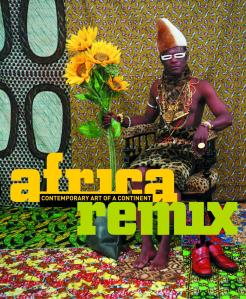
- Rotimi Fani-Kayode (Nigeria)
- Samuel Fosso (Cameroon)
- Ousmane Sow (Senegal)
- Sokari Douglas Camp (Nigeria)
- Yinka Shonibare MBE (RA) (Nigeria)
- Romuald Hazoumé (Benin)
- Hassan Musa (Sudan)
- Ouattara Watts (Cote D’Ivoire/Ivory Coast)
Although not arranged into any particular hierarchy or rank order, the featured selection are nevertheless the product of the author’s own subjective musings about who should be considered as global change-makers and innovators within the context of contemporary African arts, and the list was deliberately not compiled according to a pre-determined set of aesthetic selection criteria against which prospective entrants might be assessed, compared and contrasted.
Writing in the introduction to the 4-part series Martina Dodd outlines its scope and purpose by announcing an intention to showcase:
“…14 contemporary artists who have and are still grappling with their identity as an ‘African’ or ‘Black’ Artist. The people on this list are as diverse in discipline as they are in culture. Ranging from sculpture to photography, and hailing from Sudan to Cameroon. Each artist, tackles personal and global topics of representation, identity, and self-discovery particular to Africa and those of the Diaspora. These 14 artists were chosen because they uniquely speak through their work to comfort and shock their audience into a deeper understanding of their heritage and contemporary life.”
– Martina Dodd – AADAT website, January 2014
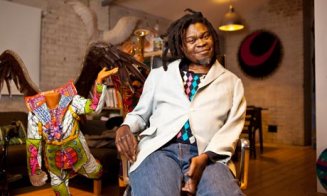
Naturally, I agree with the inclusion of several artists featured in Martina’s list – not least the celebrated Nigerian-British Royal Academician, Yinka Shonibare MBE, and also Benin’s most avant-garde conceptual artist, Meschac Gaba – creator of the world-famous 12-room installation ‘Museum of Contemporary African Art 1997–2002′.
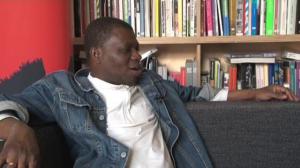
However, I was disappointed that the introductory narrative appeared to elevate the artists’ contributions to identity politics above aesthetics as one of the key factors in the selection process (Surely, they are both as important as each other?); and I was equally also concerned by the presence of two familiarly problematic over-arching issues that always seem to recur whenever African art enthusiasts based in the West survey the entire continent in such geographically reductive ways:
- Firstly there is a prevailing regional bias towards West African artists in a selection which purports to be representative of a continent comprising more than 50 countries and island territories – with Nigeria the most over-represented nation. In comparison, there isn’t a single representative from southern Africa, the North African Maghreb region, Madagascar and the Indian Ocean island territories, or the eastern African nations of Kenya, Uganda and Tanzania.
- Secondly, there is a predictable bias towards male artists in the listing – with a 7:1 gender ratio established to compare and contrast the innovative work of seven men to one woman within the global arts arena. So, although I was delighted to see the Nigerian-British sculptor Sokari Douglas Camp on the list – and personally feel that her skill, vision and creativity as a metalwork artist are quite beyond comparison – she should not have been the sole female representative from such a vast continent that has an ever-increasing, internationally renowned pool of trailblazing, avant-garde women artists working across a range of genres, artistic media and aesthetic practices.
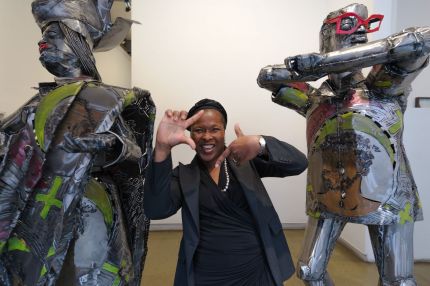

So, aside from Sokari Douglas Camp, perhaps we should have also seen key names such as the Ethiopian abstract painter Julie Mehretu (shown right) and the Moroccan textile artist Safaa Erruas (shown below) – who are just a few of the outstandingly talented women who’ve been trailblazers for innovation and change on the African continent in recent years, and who have also used their artwork to address “global topics of representation, identity, and self-discovery particular to Africa” and the wider diasporas
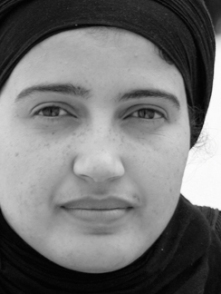
I’m not sure what is planned in Part 4 of Martina Dodd’s series…but the following women would definitely be on my list: the afore-mentioned Safaa Erruas (Morocco), the painter, curator and art historian Lubaina Himid MBE (Tanzania), abstractionist Julie Mehretu (from Ethiopia, now based in the USA), the world-famous collagist, painter and sculptor Wangechi Mutu (Kenya), conceptual artist, photographer and installationist Mary Sibande (South Africa) and the textile sculptors Nnenna Okore and Victoria Udondian (both from Nigeria).
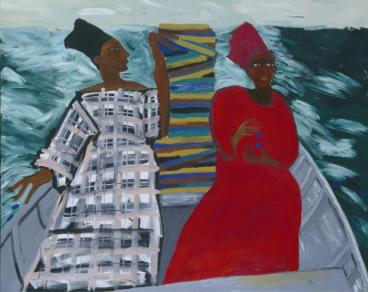
Equally, other male contemporary visual artists who would feature on my list of top 14 innovators from Africa (who’ve also had a significant global impact on aesthetic ‘turns’, art politics, emerging new conceptual art practices and representational techniques) would be: Barthélémy Toguo (Cameroon), Abdoulaye Konaté (Mali), Joël Andrianomearisoa (Madagascar), the “Master” El Anatsui (Ghana), Francis Pume (DRC), and the sculptor Cristóvão Canhavato “Kester” from Mozambique.

In my opinion, this AADAT listing is not diverse or varied enough – in terms of artistic genres, regional/geographical representation across the African continent, techniques of application, range of media, or conceptual innovations, etc. With the notable exception of Rotimi Fani-Kayode, the listing is also a relatively safe and somewhat predictable presentation of established “usual suspects” drawn from the contributor lists and catalogue indexes of the major African art “mega-shows” that have been displayed in Europe and the USA since the late 1980s – including Magiciens de la Terre (Paris, 1989), and Africa Remix: Contemporary Art of a Continent (displayed in London, Paris, Düsseldorf, Tokyo, Johannesburg and Stockholm, 2004-2007).
Despite its predictability, this AADAT series still serves as a useful catalyst for sparking discussions and debates about the diversity, complexity and innovative brilliance of contemporary artists who have emerged (and continue to break through at a pace) from Africa and its diasporas.
Which artists would be at (or near) the top of your list of contemporary African art innovators and change-makers?
WEBSITE LINKS, FOR FURTHER INFORMATION::
To read more about Martina Dodd’s list of artists, please follow these links on the AADAT website to access the full-text of Part 1, Part 2 and Part 3 of the 4-part series “14 Contemporary Artists Who Are Challenging the Definition of African Art.”
NB: Part 4 in this series is expected to be published via AADAT (http://aadatart.com/) later in the year.
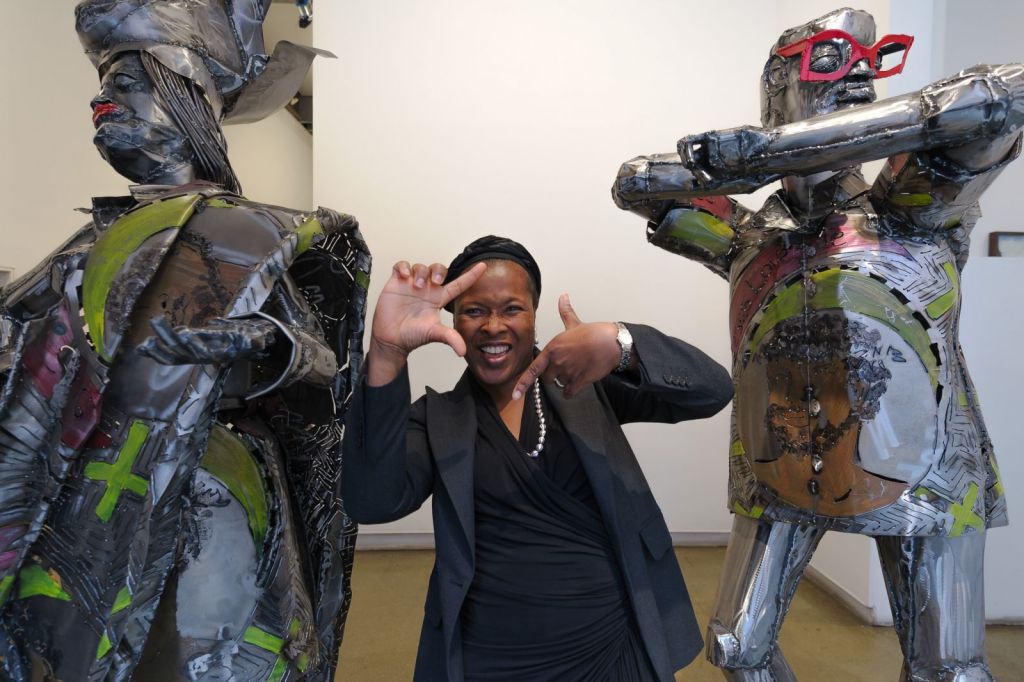
3 responses to “Africa’s contemporary art change-makers – Who would feature at the top of your list?”
Whao, thank you for this very important analysis of contemporary African artists. Now, I am deeply ashamed of myself for how little I know on this subject especially with women artists – must read up.
Many thanks for enlightening us.
LikeLike
Thank you, Folakemi. I welcome the opportunity to discuss contemporary art created by women artists from the African continent – and the wider African diasporas – on future occasions. I enjoy reading your blog posts – which are always insightful and informative. I am learning a lot from your social and cultural commentaries about Nigeria. With best wishes, Carol Dixon.
LikeLiked by 1 person
Thank you Carol for getting back to me on this, likely going to reach out to you at some point.
And also thank you for reading my blog and for the comment.
BW, FO
LikeLike